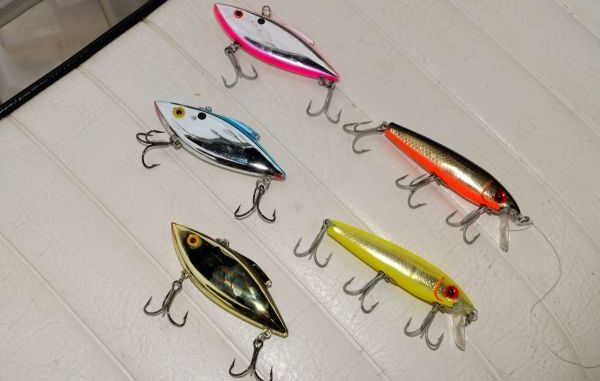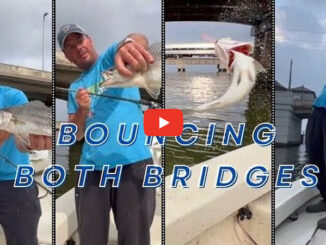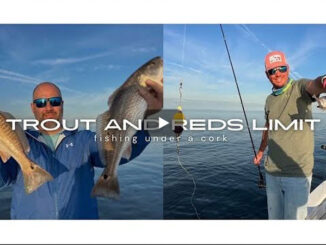
Chuck and Zelita “Z” Cristinas never use a trolling motor to troll for speckled trout.
“It’s hard to keep speed constant,” Chuck explained. “You have to keep speeding up and slowing down a trolling motor.
“I use my big (225-horsepower) motor for trolling and set my throttle as low as it will go and still be in gear. We set out two drift socks off the stern to slow our speed down even more.
“I like my speed to be from 1.5 to 2 mph, depending on the temperature of the water. The warmer it is the faster I can troll.”
He prefers to troll between the two spans of the bridge. His second choice is outside the western span, but he readily admits that his catch usually isn’t as good there as it is between two bridges.
After their lures are out, Chuck runs the boat in zigzag fashion from one span to the other and then back again. This causes their trolled lures to rise and fall.
He is convinced they get most of their hits when the lures are falling.
The couple uses both spinning and baitcasting rods, with no particular preference.
The same goes for lines. Monofilament and braided lines are used, and line test isn’t critical, either.
“I’ve seen them all work,” Z said.
No matter what their main-line choice is, they use 15-pound-test fluorocarbon leaders at least 2 feet long. The leaders are attached to the main line with a swivel.
“That’s important,” Chuck stressed, “because you get line twist when trolling.”
Lure choices are relatively simple: lipped MirrOlures and Saltwater Rat-L-Traps.
“Our favorites are a gold MirrOlure with an orange belly and a silver-and-pink Rat-L-Trap, but carry a lot of colors to try if what you have on doesn’t work,” Chuck said. “Believe it or not, the preferences of the fish for color will change when the sun comes out or goes behind clouds. Overall, we catch more fish on MirrOlures than Rat-L-Traps.”
He noted that they often add a rod rigged with a soft-plastic paddle-tail grub on a jighead to the mix.
“This is effective when the fish are hugging the pilings and you have to troll close to them,” Chuck explained. “You are not as likely to snag with a single hook, and if you do you aren’t losing a $6 lure.”
He is convinced speckled trout are spread along the length of the bridge, but the couple usually fishes from just beyond the second hump from the lake’s south shore to the second hump from the lake’s north shore.
Humps are elevated arches in the bridge’s spans that were put in to allow larger vessels to pass under the bridge without having to go to the draw in the center of the lake. Humps are spaced 4 miles apart.
Their regular spacing is used by fishermen to describe fishing locations along the bridge.
“We do best in the middle of the lake,” Chuck said.
Trolling is done in both directions, with neither north nor south being more productive.


